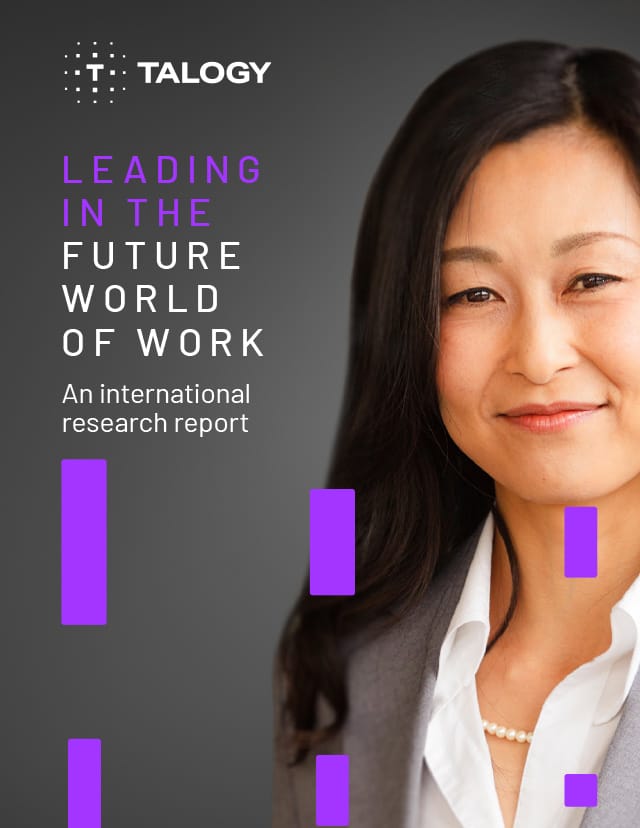Written by Brian Dishman, Senior Consultant
Previously published by PSI Talent Management or Cubiks, prior to becoming Talogy.
There is no doubt that the US healthcare industry has been facing one of the biggest challenges it has ever seen as its front-line warriors fight COVID-19. Many of these organizations – if not most – have experienced financial impacts as well as mental health hardships among their employees that cannot go unnoticed. As the healthcare industry bounces back, learns to adjust to new policies, regulations, and approaches to patient care and safety, and prepares strategic plans for the future, I couldn’t help but try to consider some positive changes that may come about for the industry as a result of the COVID-19 pandemic.
Below are three positive changes I have seen so far as a response that will impact healthcare moving forward.
1. Expanded Access to Care Through Telemedicine
Prior to COVID-19, many healthcare organizations were slow or unable to adopt remote and telemedicine practices for a variety of reasons – perhaps they tried before and couldn’t get it off the ground, did not have the technology, were slowly adopting and in initial phases of implementation, or simply thought it could not work in their organization. When COVID-19 posed a threat to patients’ ability to safely come into healthcare settings, it essentially forced many organizations to reexamine their healthcare delivery model and dive right into the telemedicine market headfirst. The good news is many quickly learned they could do it and were quick to act. One healthcare client I work with reported telemedicine visits were formerly around 10% of patient visits and now are projecting to slightly over 30% for the reminder of the year.
The old world of having 20, 30, or 40+ patients in a healthcare office moving forward may not happen again, and healthcare organizations need a way to continue to provide necessary care. Telemedicine may be the answer in this new world. Of course, the current ease of government regulations and changes to payment models assisted in making the transition, but I would expect to see the upward trend of telemedicine to continue to rise despite challenges being faced (e.g., regulations and technology access). In fact, Arizton reports that 76% of hospitals in the US are connecting with patients remotely and that the US telehealth market is expected to reach roughly $10 billion by 2020 with an 80% year-over-year growth due to the effects of COVID-19.
2. Innovation
Very few people in today’s world have seen a pandemic of this nature sweep across the globe, but looking at how people have responded and come together to fight COVID-19 has been inspiring. One uplifting outcome is not only how people and organizations have come together, but also how it has bred innovation. The Harvard Business School article “The One Good Thing Caused by COVID-19: Innovation” provides several great examples including robots in hospitals being used to drop off meals and medicines to be patients to reduce risk, new ways for museums and galleries to connect to people through online platforms, and even Amazon’s “Just Walk Out” technology that utilizes AI and computer vision technology to allow customers to skip the checkout line completely and be billed directly.
Other healthcare-specific changes I have seen in the industry and with clients also include creative ways to build medical devices and equipment that are needed to combat COVID-19, like much-needed PPE gear and ventilators. Similar to how other businesses are reimagining their environments for customers to mitigate health risks for both customers and employees, healthcare is no different, and I think several positive changes to safety procedures will be an outcome we will see.
3. Resilient Healthcare Leadership
By now, we have all seen and heard great examples of leaders stepping up to the challenges their organizations are facing in these unprecedented times and exhibiting what it means to be a great leader. Going through a crisis has forced many to examine what they want and need in their leaders.
As someone with a unique background in both I/O psychology and healthcare administration that has helped numerous organizations select and develop leaders, it is reassuring to see many other folks taking notice of common and core leadership competencies that are not only needed now in times of a crisis (and are desired for the future), but have always been identified as predictors of performance in leadership roles. For example, including leaders with high emotional intelligence, resilience, optimism, and a strategic mindset (e.g., innovative and open to new ideas). Now that organizations have identified leadership qualities that contribute to success, continuing to select and develop leaders in these areas will undoubtedly help organizations make positive strides moving forward.
Though 2020 has been a difficult time, especially in the healthcare industry, by focusing on the positives like the ones outlined above, I think we can learn from the challenges that we’ve faced and look forward to a brighter future.


